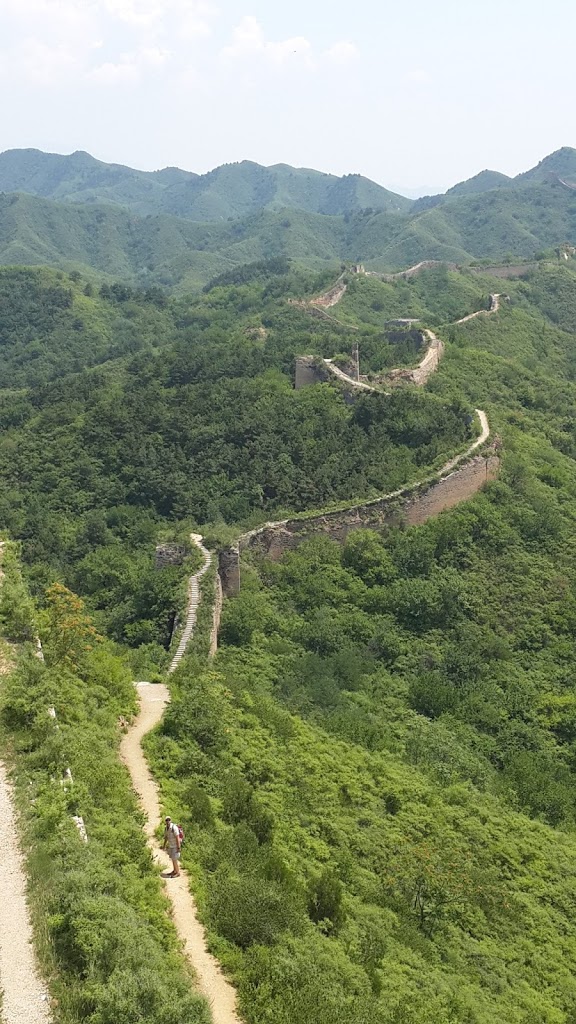
The Journey to the Festival Site, Tarboche
It was -2 degrees Celsius in early June 2018.
I was in the one of the remotest regions in the world, a seemingly small, desolate, grimy town called “Darchen” located in the far west Ngari (Ali) Prefecture, approximately 1,200 km from Lhasa, the capital of Tibet.
At the break of dawn, we set off from our guesthouse towards the ground of Saga Dawa Festival – one of the biggest and grandest festivals in Ngari area, if not the entire Himalayan region.
As I walked past a residential area, I could faintly see the silhouettes of a few women squatting right in front of their houses, beside the road where we were walking on. As I looked closer, I realised they were going about their business “passing a motion” right at their front yard onto the frozen ground. I immediately looked away, bewildered by what I had just seen. What is deemed as the norm in other cultures may seem strange to us. Don’t be quick to judge, I reminded myself.
It was a 7-8 km walk to the festival site in Tarboche. The morning breeze in the subzero temperatures sent shivers down my spine despite having 4-5 layers on me.
As we reached Tarboche, the venue had a solemn atmosphere to it. Entry into the festival site was tightly regulated by the Chinese military and police force. We had to go through security checks and body scans before entering the site.
The Tibetans had observed heightened security by the Chinese government all over Tibet in recent years. As I travelled across Tibet, I could see military personnel and checkpoints were stationed all across Tibet: from Lhasa all the way to the Fast West Ngari prefecture. Surveillance cameras were installed in major highways, cities and towns. What I find intriguing is that police stations were built within the confines of some Tibetan monasteries, closely monitoring and observing their movement and activities. Undeniably, the presence of the Chinese government infiltrates all aspects of livelihood of the Tibetans.
The Saga Dawa Festival
For the uninitiated, the Saga Dawa Festival honours the life of Buddha Shakyamuni, celebrating his birth, enlightenment and nirvana all within the same month. Many Tibetan Buddhists would attend this festival coming from all over the Ngari region, some even travelled from far-flung regions bordering Nepal, India and Bhutan.



Tibetan ladies, coming from various regions of Tibet, congregated in Tarboche and put on their best costumes, jewellery and accessories for this very special occasion which only occurs once a year.
The climax of the Saga Dawa Festival revolves around the flagpole erecting ceremony. The flagpole carries hundreds and thousands of Tibetan mani flags with auspicious wishes and blessings written on them, all strung together and attached by human manpower to the gigantic pole.
The Tibetans believe that the good wishes, prayers and mantras written on these mani flags would be carried in the wind and sent to the heavens above.



The ceremony ends with kora – a circumabulation around any object deemed holy, in this case the gigantic flagpole. The direction of the circumabulation would depend on the particular religion. Tibetan Buddhists would do the kora in clockwise direction, while Tibetans with Bon religion (ancient pre-Buddhist religion native to the Tibetans) – anticlockwise.
Some Tibetans held in their fists a pinch of white-coloured powder (which I believe is a type of rice flour). They shouted in high spirit and then released the powder in the air.
“This ritual is mainly practised by Tibetans who live near the borders of Nepal. They believe that by saying some prayers and releasing the flour in the air, they are able to dispel bad luck and evil spirits.” My Tibetan tour guide explained to me.

What happens after the ceremony?
This concludes the flagpole erecting ceremony. But that is however not the end of the Saga Dawa Festival in which the celebration actually stretches throughout the entire month between mid-May to mid-June. Most Tibetans would perform a kora around the holy Mt. Kailash, an arduous 53-km circuit at a hypoxic elevation averaging 4,600 – 5,600 m above sea level.
For the local Tibetans who are born in and well-acclimatised to this altitude (4,500 m above sea level in Darchen), they are able to complete the entire circuit in less than 24 hours. For the deeply devoted Tibetan Buddhists, they would do full-body prostrations throughout the entire circuit. They take at least 2-3 weeks to complete the journey, putting their faith, mental and physical strength to the test.
For an average Buddhist pilgrim or a tourist/traveller who just wants the holy experience, it is a 3-day hike going through Droma-La Pass, the highest point of the kora, standing at 5,600 m above sea level.
Afterthoughts
One thing I learnt from the Tibetan people is their resilience and their respect to nature and all living things.
Ngari Prefecture has a very harsh climate – mostly dry and arid all year round, it even snows during summer. Only very few crops can grow on Tibetan soil – barley, wheat, potatoes and maize. Tsampa is their staple food – roasted barley or wheat flour mixed with yak butter tea. They eat this nearly everyday as it gives them the energy and nutrient needed living at this altitude.
Despite the harsh environment, the lack of stable supply of electricity, the lack of proper water supply and sanitation, the people in this part of the far west Tibet still make the best out of their circumstances. Wherever I go, I see a big smile on their sun-burnt faces.










Pingback:Trekking Mt Kailash in Far West Tibet - A Test to the Mind & Body - foodieadie
Please share your story with us, we will feature you. Visit ACN – Latest News of Japan | Trending News in South Korea | China Business News